Finally! I’ve lined up all the numbered boxes from that warehouse collection I bought before Christmas, there are about 1,100 comic long boxes now in some semblance of order. I didn’t show you the pic of the 500 or so boxes that have no numbers on them, that’s my next project.
OK, so most of this stuff is from between 1979 to 1995, though there is quite a bit from before 1979 and after 1995 I’d say the “meat” of the collection is from between those two years. I’ve obviously peeked through some of the go-to spots and can assure you there are no big piles of Spidey #194, 238, 252, 300 etc, nor are there piles of Thor #337, DC Comics Presents #26 etc. Most books that were worth good money three or four years ago are not there, though luckily for me there are quite a few surprises still remaining. For example, I did find a nice stack of Amazing Spider-Man #210, first Madam Web. The other thing on my side is that a lot of new hot books have surfaced these last couple of years and continue to do so. Yay.
What sticks out so far is the quality of the stuff, very nice high-grade uncirculated copies that are a pleasure to take out of their bags and leaf through.
I’m trying to figure out how to best tackle these boxes and I think I’m going to go with working the computer rather than the aisles. Starting this week I’m going to verify some staple titles from the era – like say Spectacular Spider-Man, Master of Kung-Fu and Batman – and then sit down with my laptop and systematically go through issue by issue and note which issues have favour in today’s marketplace. I’ll then take this list and go find the boxes they should be in. Seems like a good plan to me, I’ll let you know how I’m making out.
We’ve started to post some of the books that we have found onto our store site bigbcomics.com. In the Vintage Comics section, we threw up 47 individual issues ranging from Star Wars #68 to Daredevil #185. I was surprised to see how fast they went, as of today I think 35 of the 47 have sold, we’ve just put more up than we had in reserve and I’ve been busy all weekend getting a fresh new batch ready to be put up this week. It is labour-intensive as I do grade every book with an adjacent grade range, i.e. 8.0 to 8.5 or 9.2 to 9.4. I’m consciously trying to under grade to make sure I do right by those tight grading old timers that may want to fill in their runs with this stuff.
The cheese, salami and crackers my pal Mike stocked the fridge up with have sure come in handy this past week. Lining up those rows is a really good workout and helped work up a good appetite. I should probably consider stocking that fridge with some carrots and celery but at the moment there is no room thanks to the beer, meats and cheeses! Perhaps in the spring.
Auction Highlights
This week we posted a CBCS 8.5 Avengers #2 to our weekly eBay Auction. The book belonged to an ICE consignor that felt the time was right to try his book on a no reserve auction. I was a bit nervous because of the CBCS designation, the market had not been treating CBCS with the same confidence they treat CGC over the past couple of years and the difference really manifests itself in the high grades of higher valued books. Still, this CBCS 8.5 boasted White Pages and it had a clean look with a good register to it.
The final sale price was $1,691.65 USD, a great result as far as I see it. The CGC 8.0’s for Avengers #2s don’t even get $1,000 and I was worried the market would force a CGC 8.0 price on this CBCS 8.5. The last CGC 8.5 sale was $1,900 but that was back in the summer, I’m not sure what one would bring today, $2,000 is not an unreasonable assumption.
I thought CBCS did a great job delivering value to this book, again, it has a clean look to it and the White Pages also help. I’m going to call this Advantage Buyer because the buyer bought a superior copy for a bit of a discount. Advantage also goes to CBCS here, it was a good result.

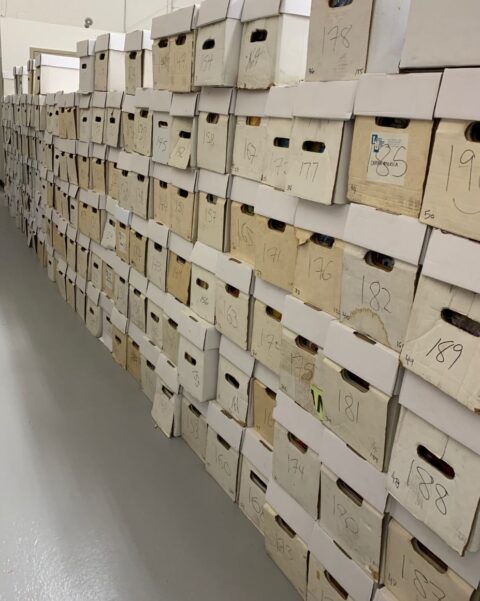
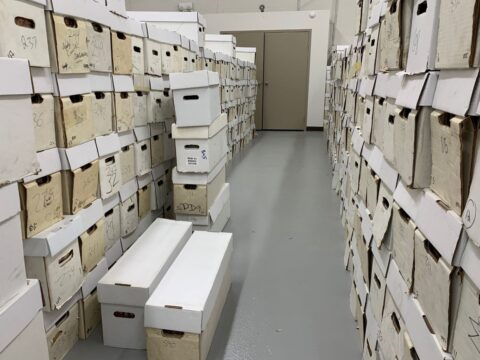
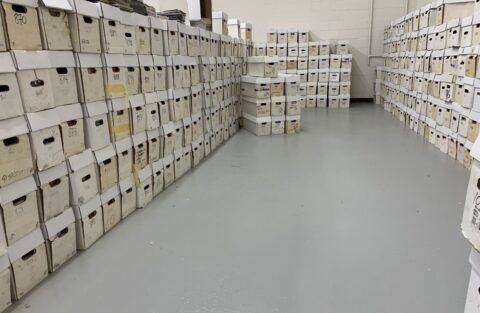
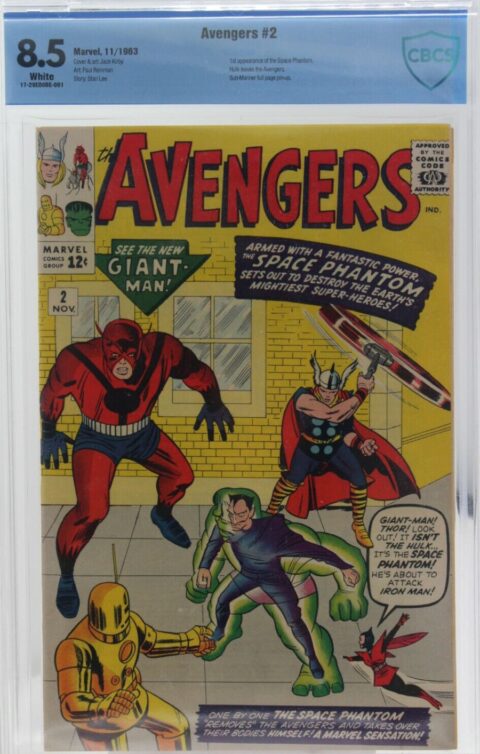
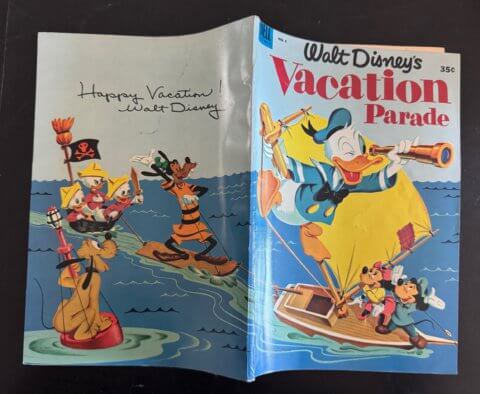
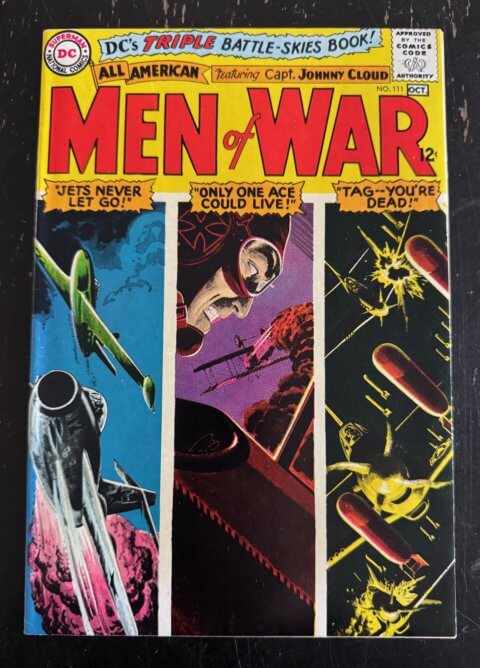
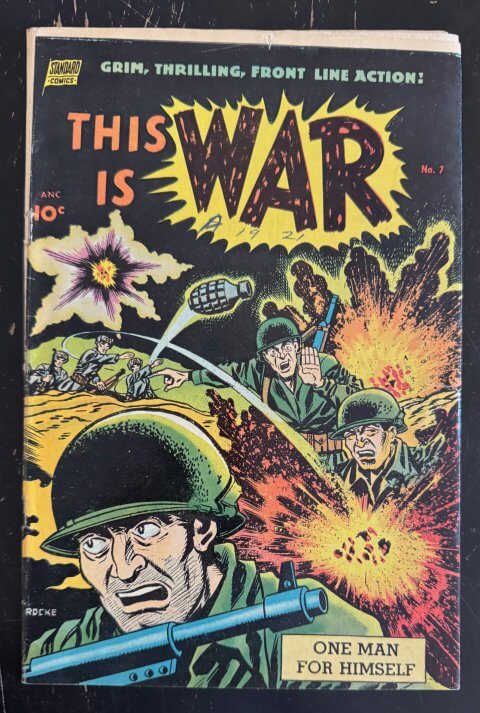
That’s one amazing number of boxes to deal with. The labor involved, I just can’t imagine it, grading and pricing. Better you than I, since my own interest in this period is, well, just about nil I’m afraid. But I’m pleased that its turning out well for you.
Whoever bagged and put these aside, and bought them just to sit on them…boy, they must have lost their shirt. You might do a quick estimate of how much they had tied up in these books…someone bought them at best, in the beginning from a distributor, for 55%, maybe even 56% off cover (the largest retailers got amazing discounts back then).
But that still adds up fast on books from this period, and its why so many retailers ran out of cash and went belly up during the black & white crash, and in 1990s, as cover prices kept going up and retailers didn’t stop over-ordering. I recall the number of comic shops was said to have gone from 10,000 to about 3000 during that time, that’s not verified, but it’s at least an indicator of the bloodbath.
That’s said as a former retailer (I was a partner in Comics & Comix chain of 7 stores) and distributor, I saw it from both directions, and got stiffed by several old retailers, in the late 1980s, who used to load up on cheap comics that sold great as back issues….but then as things slowed down, they didn’t cut back when cover prices went up and up.
I was glad to be out of distribution in mid-1988, when Diamond bought me out. Just after that, Marvel started distributing their comics direct, and trashed the 13 or so distributors who were left. In very short order, Diamond was last man standing. Capital City, Alternate Realities (Rozanski), Comics Hawaii, Friendly Franks, Richard Finn/Second Genesis in Portland….they all got crushed when Marvel took away that portion of their sales and they could not react quickly enough and reduce their infrastructure.
I had seven warehouses all by myself in 1988, three in California alone. Capital and Diamond had even more warehouses across the country. There was a huge, huge number of comic shops getting really, really great service as we all competed for their business. Individual cities like Phoenix, LA, Seattle, Portland, San Diego, had their own distributor warehouses, sometimes more than one. We even ran van delivery routes to keep the shipping cost down for the stores, we’d deliver new comics and related material like clockwork each week, to their doors. Some distributors also had showrooms (I certainly did), where retailers could shop for reorders, graphic novels and books, etc—immediately, and with no shipping cost. A far, far cry from today.
All that’s history now, with Diamond the monopoly for decades. Well, at least up until DC just recently took away THEIR titles, just like Marvel did in the 1990s.
The comics you’ve listed in the vintage section have been so nice! Really mint…I’m actually concerned…I’ve bought 6 of the 35, so 18%….extrapolate that over the 500,000 comics in the warehouse and I don’t have room in the house for that!!!!
Walt, are there any Canadian price variants or are these books out of the year ranges or direct market only?
You’re lucky that the books are bagged, boarded and well-cared for, as opposed to those warehouse finds which can be waterlogged, rat chewed, moldy or just simply packed on pallets with no rhyme or reason, with many having strapping damage.
Can’t go wrong with salami, cheese and beer! (:
Klaus, you really can’t go wrong with salami, cheese and beer! No CPVs, well a few at random but most look like they were distributed through a US distributor, too bad because CPVs are hot!
Spider, you have to go easy and maybe downsize that 65″ TV down to a 43″ to be able fit more books.
Thanks Bud, you must have had way more than 1700 long boxes in your warehouses back in 1988? Were they all current issues at that time or was there back stock going back a decade or so? Also, I went out to Friendly Franks just outside Detroit back in the mid to late 1980s, how long did they survive? Did they move on to a store front?
Walt, for an upcoming column, could you do a complete walk-through on how to submit a comic to CGC, CBCS, ie.. the fees they charge, the insurance needed, the envelope and labelling needed to get it through customs both way and safely past border authorities, so it arrives in both destinations, there and home again. Would we need a broker too?
Every article I’ve ever read makes it sound so complex to the average collector yet dealers do it all the time. I have a couple of golden agers which actually look pretty good and was toying with the idea of getting them slabbed but don’t want the shipping, insurance and slabbing fees charged, to exceed the value of the book.
Do you offer a slabbing service as an intermediary and, if so, how much do you charge for it or is an ascending scale depending upon the potential slabbed value of the book?
Sorry for all the questions but total newbie here. ):
Hey Klaus, good idea, I’ll gladly share what I know of the process.
Walt, your efforts look exhausting. I hope you find some Gems
I am with Klaus on that walk through. I have looked at the CGC site and frankly it confuses me and I don’t want to send off my precious comic without knowing exactly what to do!
Walter, I second Klaus’ request on the slabbing walk-through, just out of curiosity. The only books I have ever slabbed have been ones I submitted to Heritage for auction. I was caught flat-footed on an All Star #8. A buddy of mine with a complete All Star collection hadn’t realized the value the collection, let alone #8 with the first Wonder Woman. A couple of us and began pointing it out to him at one of our comic group get-togethers. He decided it was time for a new car.
But…but…my Heritage rep said it should pay off to press the #8, and not knowing any better, I said yes. I didn’t ask for a cost, thinking, oh, pressing is what, $50? It still may have been perfectly good advice, but….
Wrongo…like slabbing, the pressing cost is based on the value of the book. Oh, really?? So quite literally, the pressing cost $900 and slabbing ANOTHER $900. My buddy got about $24,000 after all that, and another $16K or so for All Star #3, after all the costs, including my (small) commission. I negociated a good deal with Heritage, between us, on Seller’s fee.
But jeez, what a lesson learned. Maybe it paid off, I hope so. Even several recent submissions of my own, that sold for $500-$1500 were costing me $60-$90 or thereabouts each to slab. Seems pretty darned expensive for mid- and high-ticket books, and of course, its all up the CGC to determine the value of the book and then charge you based on that. I’ve always thought that is a huge conflict of interest…..
Slabbing adds value, of course I understand that. Heritage’s philosophy is that if they figure it will add 20% to the value, they figure it’s worth slabbing, if I understand it right. Which means they get somewhere between 4% of that for their buyer’s fee, and something more from their seller’s fee, say up to 7% total of the added value, depending on your deal with them as a seller. Based on the book’s hammer price plus buyer’s fee, they take on average between 20% and 35%, again depending on your deal as a seller. Comic Connect, of course, and MyComicShop only takes 10%, but are there as many deep-pocketed buyer’s watching those sights? Certainly not on MyComicShop, even in their Prime auctions. I don’t track Comic Connect or any other auctions.
Walter, what’s your take on the additional value added for slabbing a book, let’s say something pre-1960? 20%?
Can you generalize? Does it have to be based on condition, i.e. slabbing an average VG copy can be a waste, but not always. Heritage has slabbed VG copies of Atlas horror, for another buddy, when they began shooting up in value.
Slabbing a FN or VFN copy on a decent title is a no brainer…that’s my quick generalization…I slabbed my Phantom Lady collection when I sold it via Heritage, and grading was all over the place, gvg, vg, not much better than fine…but my gut feeling was, with the desirability of the title, it was worth the $1400 or so that it cost for them all (I was missing two issues).
It’s settled then, three of you so far have requested my take on the pressing and grading process so next post I’ll do the best I can to summarize what I know.
Hi Walter,
To add to Klaus’ slabbing suggestion, I would also be interested in a cleaning and pressing (c-and-p) column suggested by Bud. I know that, years ago, Overstreet frowned upon c-and-p as damaging restoration, and that comics with such be devalued. I also have some comics with spine splits; you might know some resto experts who could guest write a column on some resto stuff like that.
Nowadays, it seems everyone is touting the merits of c-and-p. How does someone go about cleaning a paper-based product and, to me, pressing simply meant putting a comic in a tight flat bag and placing it under several encyclopedia volumes for a couple of weeks?
How are these for potential columns and I’m sure readers will offer still more suggestions (as if you didn’t already have a ton of stuff on your plate, what with all that cheese, beer and salami.) 😀
Tony
I was going to post earlier but luckily Bud’s post came in before, so I now have so much to say I will try to bullet-point it.
– Obviously grading/slabbing/pressing/cleaning/resto discussed ad infinitum, so maybe an outline pointing to already available info is best. And let’s agree that we won’t rehash “pressing is resto” and just work with the fact that CGC and the others treat it as if it isn’t. This will always be the Ship of Theseus.
– My rule of thumb on slabbing is that the slabbed book should be expected to sell for at least USD 200, so with the additional costs I would guess about CAD 300. There is a lot of unpriced work going into submitting and selling, so even these numbers might be too low. Maybe certain big dealers can slab a hundred modern 9.6s that would sell raw at $20 but slabbed at $100, but you really have to have massive throughput to make this work. As an individual with just a few books, you are probably better off just reading a $20 book than going through any of this effort to sell it, raw or slabbed.
– Maybe you can get the level down a bit by using a dealer/auction house’s submission service, but the downside is more steps in the process that add more danger to the condition of the books. I actually hand-delivered my first set of books for slabbing to CGC in Sarasota (a side trip from a trip to Disneyland). Later submissions were at the Baltimore con. The only books I ever shipped to CGC were for conversion from CBCS grades, so encapsulated already, and the shipping cost was out of this world (still worth it I think). I have a bunch of raw books that I keep thinking about sending, but I am daunted by the work and overhead.
– Bud, I don’t know what you mean about CGC deciding what the book is worth and then charging you for books around the $1000 price point. Up to $3000 their prices are fixed. I have never slabbed a book with a value higher than that (although I told Walt my sad Catman story of a book that was later reslabbed and went for more than that), but in any case I generally understood them to take your estimates of value mainly for insurance purposes, not so they could pad their fees.
– I think you are off in your assessment of Heritage vs. others. I think most buyers are quite savvy and don’t give a rat’s a$$ about who the seller is, as long as they are reputable. Remember, comic book collectors are pickers by nature. We are out there sniping on eBay for $100 books that we can get for $80. I follow Heritage, ComicLink (and keep results), ComicConnect, MCS, Pedigree, Hake’s, and eBay, and I can tell you that all the prices come out about the same. (Except for Hake’s – there the net seems to come out higher than market more often than not – maybe Geppi has some tricks up his sleeve? – but their commissions are so high the seller won’t see this advantage.) eBay is variable but I attribute that mainly to the “reputable” issue. For example, I observe that Sparkle City repeatedly gets above market results on eBay. I contest your view on MCS’s “Prime” auctions – if anything I see them as going too high these days. Even if Heritage were to get a final price of 10% more – which they don’t, I can show you – more than that would be lost in the commission difference. Heritage’s commissions seem terrible to me, but I can imagine that in certain circumstances (the recent Batman #1 9.4) they might lead to net positive value for the seller, particularly because they seem to have smoother international reach.
– Finally Bud, while you asked Walt, I will give my opinion that slabbing just about anything expected to sell above $200 is worthwhile. You can’t say definitively it will be worth it, and buyer’s tendency to overgrade means that there will be cases where the raw would have sold even higher than the graded, but in aggregate in today’s market the slabbed book is the way to go. You should also take into account liquidity as well as value. All of the bigger auction houses will either exclude raw books or discriminate against them. That lack of liquidity means you will have to work harder and think harder about timing/selling, which are costs. All Phantom Ladys (Ladies?) should be slabbed, case closed. I’d turn this question on its head – name me a book that would sell for say $500 or more that _shouldn’t_ be slabbed.
Tony C, We’re gonna need a bigger plate.
Meli might be too smart for this column, I had to google Ship of Theseus! I’ll sure the folks at Barret Jackson have their opinions on this subject.
I’ll save my details re pressing and grading for my next posts but Chris is right about prices realized, HA does not have the monopoly on great results, our eBay auctions have been setting records for certain issues and grades lately.
There was a time that CBCS sold for less than CGC for the same grade. I now see CBCS selling for higher on many occasions. This may be due to comic owners resubmitting and getting higher grades at CGC. Do you just need to resubmit to get a higher grade. Why was the last grade off?
I also note that lower grade issues at Heritage are generally unslabbed and often go for more money than slabbed issues of the same grade. Check the recent unslabbed Lou Fine cover issues selling a few days ago.
Walt, or Chris, you should also touch ( no pun intended) on how we came from Restored to Universal with glue on the spine and that is now okay. Also, if a book is in great shape, but lists as 1.0 Fair as it is missing a centrefold it will likely sell for many times more than fair value. Often the grade has little bearing on values for grades under 2.0 Good.
With apologies to Chris but I’d still like to see grading, slabbing, pressing and cleaning discussed in some new separate columns. The reason I made the original request was that I haven’t read anything lately on these topics. Maybe some experts would find the topics tedious but they could simply skip reading them. From my newbie perspective, I would enjoy reading and learning things I don’t know about. Most websites on this stuff presume the reader is an expert.
Alex, it seems our posts were all submitted around the same time.
When I first started collecting, there was only good, fine and mint. The average book was good. A little tighter, shinier book was fine, and if you picked up one off the rack or shelf, it was mint.
Anything poor to fair was basically roadkill in paper form and not worthy of even putting in a bag or box or in your collection and waited in a pile until a replacement was found.
When they introduced very good, I thouhht it was a bit of a stretch to try and pry a bit more money out of the buyer. Now with all these numbers from 0.5 to 10, I feel the hobby has gotten too picky for a lot of books, ie.. gee, is it a very good + of fine -? I even saw one guy selling books as fine ++ and good +++. WTF?!
What’s the difference between a VF+ and a NM- ? Indeed what can a NM- or NM+ be? A favoured seller gets this picky but I do like his site – active listings, all copies price according to (their) grade with a pop-up chart of the reasons thereof, discount prices on books over 60 days, various sales, reservable shopping cart for 72 hours and you can leave a request for issues that are sold out and they’ll notify you if any come in.
For myself I use Poor, Fair, Good, Fine. There is no Near Mint or better – if it’s been handled it ain’t so. .5 to 9.8 grading, ridiculous.
– rant deleted – : )
Paintings, drawings and fine art prints aren’t slabbed (or laminated*), neither are antique or first editions books, ephemera, photographs, money, letters, documents or vintage movie posters. If you want to preserve things at the least it should be by professional conservation methods or museum grade cases with proper atmospheric control setups and if you’re spending a million bucks for an Amazing Fantasy 15 you can afford it. Money I’ve seen in lucite casings but they’re still openable, heck, even trading card hard cases are openable.
Maybe I should buy some slabs just to see if I can crack them and start a business for that. And I could sell sleeves to protect the slabs, and frames so you can hang your slab on the wall (oh wait, you can get those).
(*I’ve seen artists laminating their prints into table placemats, occasionally vintage film posters turned into plastic prints of no value. Painful.)